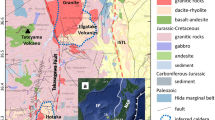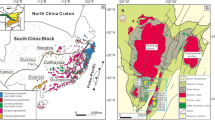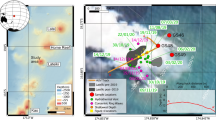Abstract
THE discovery of nepheline-syenite and monchiquite in Girnar, Kathiawar, announced by Dr. J. W. Evans in 1901 has, after a lapse of a quarter of a century, been followed by detailed petrographical and field investigations published in recent issues of the Records of the Geological Survey of India and the Journal of Geology respectively. The central mountain forms a dome of plutonic rocks intruded into the overlying Trap. Further investigations in Gujrat and Kathiawar have revealed a fascinating chapter in the history of post-Cretaceous igneous activity in India which is not dissimilar from the Tertiary igneous activity of Scotland. They acquire a special interest in view of the recent theory of magmatic cycles and its application by Dr. G. W. Tyrrell to the British Isles.
This is a preview of subscription content, access via your institution
Access options
Subscribe to this journal
Receive 51 print issues and online access
$199.00 per year
only $3.90 per issue
Buy this article
- Purchase on Springer Link
- Instant access to full article PDF
Prices may be subject to local taxes which are calculated during checkout
Similar content being viewed by others
Author information
Authors and Affiliations
Rights and permissions
About this article
Cite this article
MATHUR, K., DUBEY, V. Post-Cretaceous Igneous Activity in Western India. Nature 118, 769–770 (1926). https://doi.org/10.1038/118769c0
Issue Date:
DOI: https://doi.org/10.1038/118769c0
Comments
By submitting a comment you agree to abide by our Terms and Community Guidelines. If you find something abusive or that does not comply with our terms or guidelines please flag it as inappropriate.



